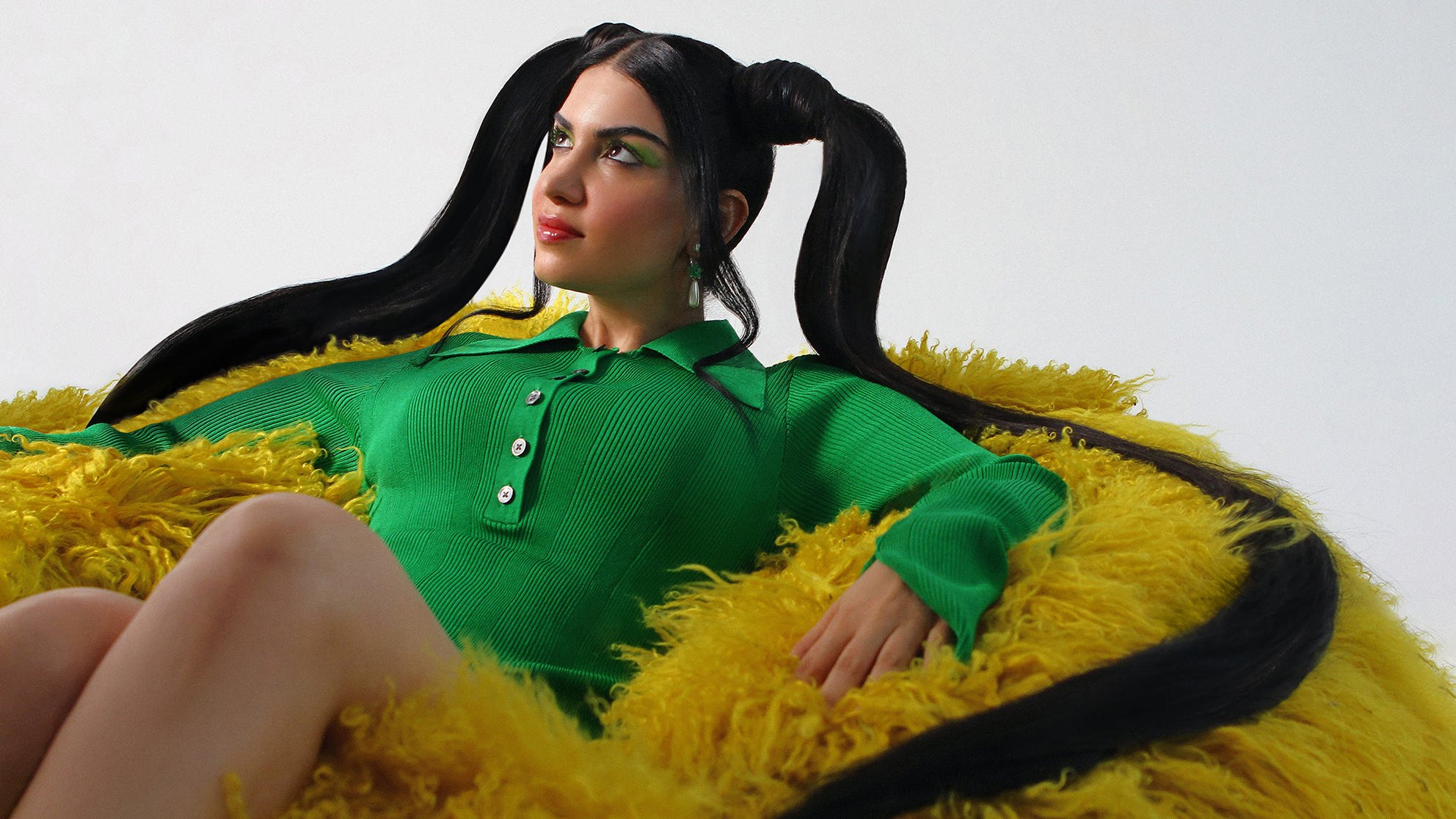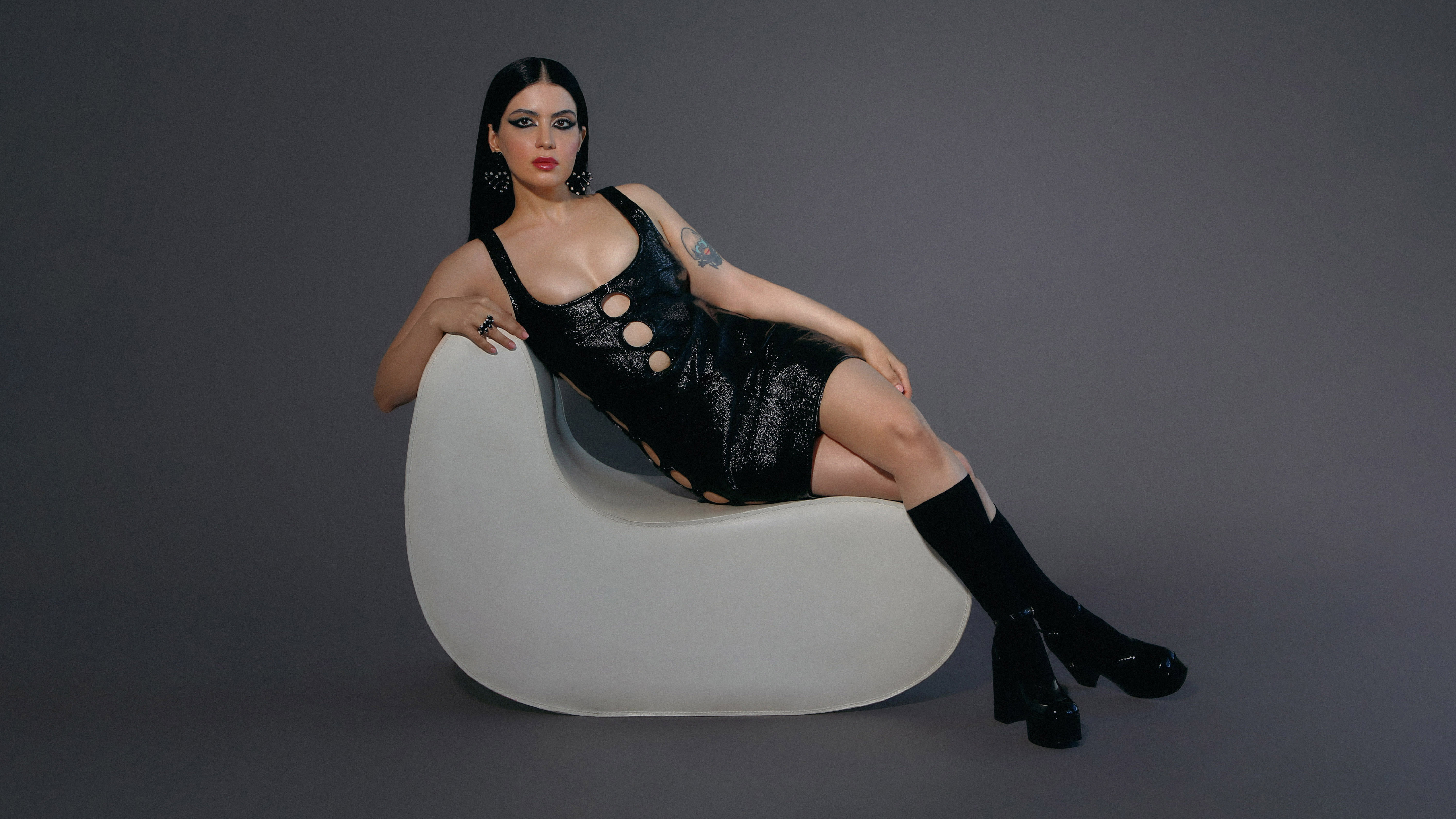Paramida: "Don’t overproduce it. The charm is in the rawness"
The producer, DJ and Panorama Bar resident on reframing samples from her extensive record collection into lysergic, trance-inflected techno

Many electronic artists are inspired by the glorious heyday of ‘90s rave, but few take this inspiration quite so literally as Paramida.
The Berlin-based Panorama Bar resident began her career as a DJ and label head, curating her imprint’s vibe by giving each artist these specific instructions: “Imagine it’s 1992, you are at a rave in Goa on the beach. It’s 8am, what’s the track playing? Make that track.”
After experimenting with producing edits to drop in DJ sets, Paramida decided to refocus her energy away from guiding other artists towards the sound that inspires her, and figure out how to create it herself.
Since then, the producer’s nailed down a singular style that sees her reframing and reinterpreting samples from her extensive record collection into lysergic techno workouts and technicolour rave stompers, culminating in her latest release for Love On The Rocks, Moonrise VII. We spoke to Paramida ahead of the release of her sophomore EP to find out more about how she makes her tracks.
When did you start making music, and how did you first get started?
“I started a few years ago making edits. At the same time I realized that I kept telling every artist that wanted to release on my label the same thing: “Imagine it’s 1992, you are at a rave in Goa on the beach. It’s 8am, what’s the track playing? Make that track.”
“After a while I realized that with the time I spend on guiding other artists to make that sound, I could spend on trying myself, and that’s what got me into production. I took a couple of Ableton classes and had some private tutoring with producers that I admire. I learned to take the best from all three of them and make it my way of producing.”
Want all the hottest music and gear news, reviews, deals, features and more, direct to your inbox? Sign up here.
Tell us about your studio/set-up.
“I do everything in the box and use a lot of plugins. But also my way of working is sampling old records. I am not a studio nerd, but I collect a lot of records and that’s my knowledge and angle to make music.
My record collection is the backbone of my productions
“Regarding plugins I use everything from Roland Cloud to the Korg Legacy series and the UVI Workstation, for example, for producing sounds. I sample old records and reprogram them for my percussion in Ableton. I use Valhalla products for my reverbs and sound modulations, and I use Fabfilter for processing sounds.”
What DAW (or DAWs) do you use, and why did you choose it?
“Ableton, because it’s instinctual. I didn’t even consider any other DAW since all my friends use Ableton and I had been recommended. It was pretty easy to learn the basics of it and I really love how everyone who learns how to use Ableton has a different way of working with the program.
“It’s intuitive, and the workflow is nice and straightforward with the Session View and the Arrangement View. It’s also super easy to share projects which is useful when I remix other artists’ projects. I find the whole program really useful.”

What one piece of gear in your studio could you not do without, and why?
“The Fabfilter package is the one of the most essential pieces of software that I wouldn’t be able to live without. The EQ is probably the tool I use the most, as you can see the entire spectrum of the sound and you can easily take away or add frequencies. It’s so straightforward, even beginners would understand what the tool does. The package also contains a compressor, limiter and an interesting sounding delay called Timeless that can do all types of delays. Definitely worth diving into!”
What's the latest addition to your studio?
“I’m just about to get a Roland MC-303, just because the commercial for it looks amazing and I think the groovebox is the original rave spirit.”
What dream bit of gear would you love to have in your studio?
“If anybody is up for donating their gear, I’m happy to have a Linndrum!”
When approaching a new track or project, where do you start?
“I start with a gut feeling. There’s always something in the background that I keep revisiting, so it always depends on what my idea or inspiration is. But also because I sample all my records that I play, I already always have a base to work with and then it’s pretty much like DJing for me, because I listen to the stems and try to figure out what could work well with my current favourite samples.
Which other artists do you look to for inspiration?
“My labelmates Alex Kassian, Fantastic Man, Jonny Rock and Telephones.”
If you had to pick one song/album that’s been most influential on your work, what would it be?
“It’s a ‘90s progressive house white label record called Pillar of Salt that completely blew me away and became an instant classic in my DJ sets. I just wanted more of that sound, so I kept digging, but at the same time I decided to try to make that sound myself.”
What do you think makes you unique as a producer and musician?
“My record collection is the backbone of my productions. Through my record collection I got to know so many different sounds from different eras, and as a producer I’ve cherry picked the sounds that I really like and put them together to create something unique.”
Paramida's three tips for creative production
1. Use an effects bus
“When you create effects such as delays and reverbs make sure you create them on the sends return channels, and not directly on the audio channel. This makes it much easier to handle when you go into the mixing stage, separating dry tracks from the wet while being able to take out certain frequencies that arise in the FX channels. This will help to provide you with space for a better mixdown.”
2. Experiment with parallel compression
“Parallel compression is probably the best thing that I’ve learned. By parallel compressing certain channels you get all the small sounds you couldn’t hear popping up and everything sounds fuller as a whole.”
3. Keep it simple
“One of the most important things I’ve learned in production is to make everything as simple as possible. That doesn’t necessarily mean make it super functional, but keeping it simple in the way you pay attention to shaping each sound, keeping the arrangement moving.
Don’t overproduce it. The charm is in the rawness
“I guess it comes from my background as a DJ and a record collector, but paying attention to some of the best ‘90s house records, the sounds are so on point, uncomplicated, and the arrangement is fun. So the lesson is to pay attention to old records that you like, because there is a lot of information in them and learning from those can have a huge impact on your music-making.
“If you base your arrangement on a record from your collection that you really like, it can give you clues to go down the right path and learn tricks for arrangement. For example, just reversing hi-hats or reversing a breakbeat sample can do wonders before a new scene starts. Don’t overproduce it. The charm is in the rawness.”
Paramida’s Moonrise VII EP is due out 25th August on Love On The Rocks.

I'm MusicRadar's Tech Editor, working across everything from product news and gear-focused features to artist interviews and tech tutorials. I love electronic music and I'm perpetually fascinated by the tools we use to make it.